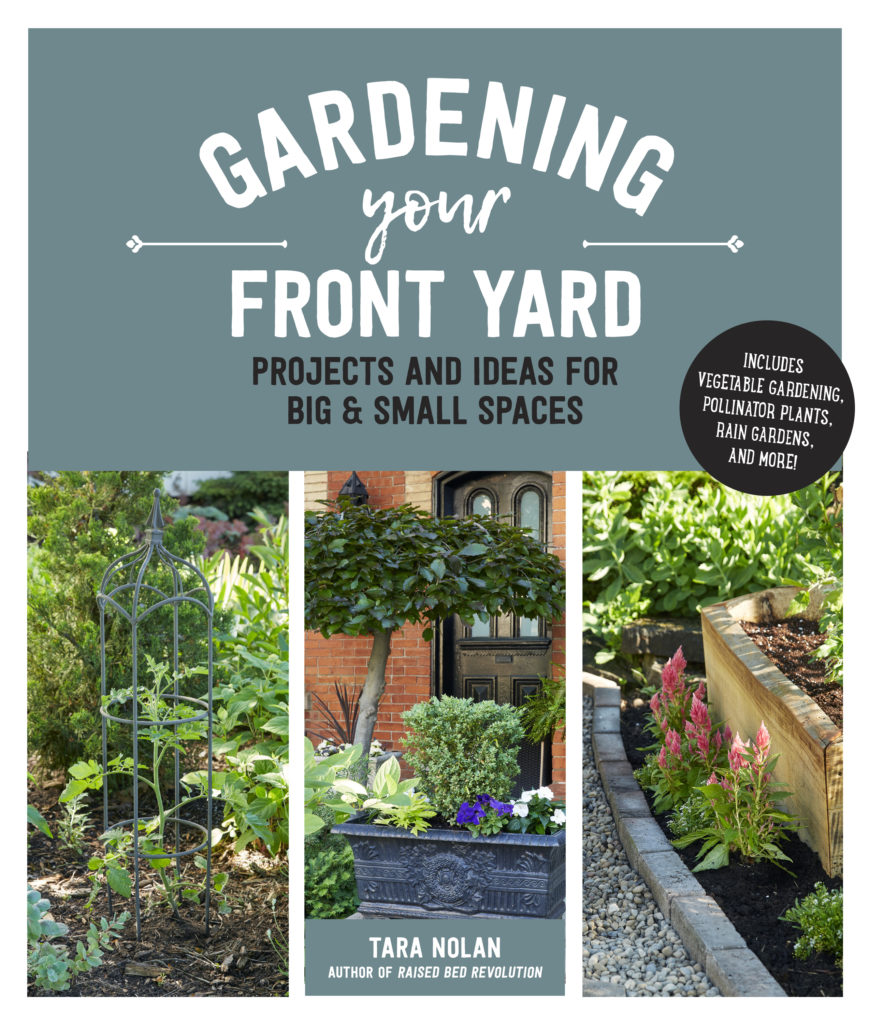Tara Nolan thinks all gardeners are artists
Tara Nolan is truly a voice for gardeners. The co-founder of the popular and award-winning gardening website, Savvy Gardening, has also written about gardening for the Toronto Star, Reader’s Digest, Canadian Living and Style at Home and served as Canadian Gardening magazine’s online editor for six years. Her first book, “Raised Bed Revolution,” was released in 2016.
In her second book, “Gardening Your Front Yard,” Nolan uses her expertise to make gardening more accessible, no matter where you live. She dives into how to fit a garden or gardens between your home and the street, whether you want to grow tasty vegetables or beautiful flowers, with crafty DIY raised beds, trellises, privacy screens and more. In this author Q&A, she chats with us about rain gardens, gardening in northern climates and building even if you’re not-so-handy.

Hello Homestead: You have a long career as a garden writer. How did you decide to tackle the “front yard” as a gardening topic?
Tara Nolan: The topic came together after chatting out ideas with my editor. He had sent an article about the social aspect of front yard design, and I had become really interested in meadows and rain gardens and other eco-friendly planting ideas. Everything ultimately came together in this book of inspiration.
HH: As you address in your book, the concept of a “front yard” can be very different depending on where you live. How did you decide to address these differences in your book?
TN: Urban vs suburban properties, space, sun vs shade, garden zones, bylaws and [Home Owners Associations]—all of these things can influence a garden’s design. I tried to include a diverse range of projects and ideas. So even if someone wants to overhaul a corner of their front garden, and not the whole thing, they can apply some of the inspiration to that space.
HH: How was writing this book different than writing your first book, “Raised Bed Revolution”?
TN: I would say the process was pretty similar. For both books I scheduled photoshoots and came up with the projects to include, I consulted experts, and I gathered photography from gardeners across North America. What was mainly different is “Raised Bed Revolution” was my first book, so this time I knew more of what to expect. I love those creative days of building and photographing! Also this time I had entire gardens photographed, as well.
HH: Aesthetics are just as important to your book as functionality. How have you worked to achieve that balance in your personal gardening projects?
TN: I think the aesthetic part is very subjective, but I always try to integrate my projects into my landscape. For example, the live edge raised bed in the book is tucked neatly into my perennial garden. Last year it was planted with a tomato, basil and pepper plant. I love that front yards are evolving to include eco-friendly concepts, like rain gardens, that help to filter storm water and divert some of it from overburdening the sewer system, and vegetable gardens, so that people can feed their families.
HH: In your opinion, what value does creativity have in gardening?
TN: I think all gardeners are artists, they’re just painting with plants and their canvas is their growing space, whatever it may be (balcony, patio, big and small spaces, driveway, etc.)

HH: Your book is filled with all sorts of construction projects for gardeners. What tips do you have for gardeners who are intimidated by a hammer and nail?
TN: Well in my first book, “Raised Bed Revolution,” I had a whole section called “Not Handy? No Problem!” where I shared upcycling ideas and easy construction projects. For this book, there is a mix of easy and harder projects. If a gardener doesn’t have the tools, I recommend renting from tool libraries or hardware and big box stores that offer that service (or borrow from a neighbor). I would recommend checking out local courses to familiarize yourself with tools and techniques if you want to tackle a harder project. Some places that sell lumber will pre-cut wood, so that’s worth checking out, if you only want to worry about assembly and finishing.
HH: What are some of your favorite projects for first-time builders?
TN: A basic raised bed (big or small) is very easy to make. And the window well raised bed is really just attaching the window well to a board (which could be pre-cut!). There are also kits, which come with everything pre-cut and all the nuts and bolts to put it together.
HH: You focus quite a bit on water and how to keep water in your front yard, especially on slopes or otherwise unconventional surfaces. Why did you think this was an important aspect of gardening to highlight?
TN: Each summer we are seeing these excessive rain events, where a lot of rain falls within a short period of time. It was important to me to provide options on moving that rain away from the house, while also not overburdening sewer systems (which can result in wet basements). Dry river beds are a great way to accomplish this, though I highly recommend consulting an expert if you’re dealing with anything that adjusts the grade or slope of your property!
HH: You are based in Canada. How does the short growing season up north impact the way you write about gardens?
TN: Where I live, I have a pretty similar growing zone to Niagara Falls or Buffalo, which is 6a, and even to one of my Savvy Gardening partners who lives near Pittsburgh. (To compare, Madison, Wisconsin, for example, is 5a.) A couple of hours north of me, gardeners usually have to wait an extra couple of weeks or so in the spring to get started. When I make recommendations for planting, I have to tell readers to know their frost-free dates and growing zones.
HH: Are there any additional considerations for “front yard” gardeners about the 45th parallel?
TN: I think the main thing is reading plant tags carefully, so your purchases survive the winter (or your garden’s conditions). For example, there are some really great rose varieties that are hardy down to zone 4, and that have better pest and disease resistance than older varieties.
HH: What do you hope readers will take away after reading your book?
TN: I hope readers come away inspired to try something new, even if it’s a small project or tackling a small area of the garden. And I’d love readers to appreciate the nods to the environment—planting for pollinators and wildlife, choosing plants based on drought resistance [and] growing their own food.
HH: Do you have any plans for future book topics?
TN: Right now I’m enjoying the fun part of promoting this book, but I’m always getting up to creative things, so who knows what ideas will be sparked for future book topics!
This Q&A has been edited for clarity and length.
